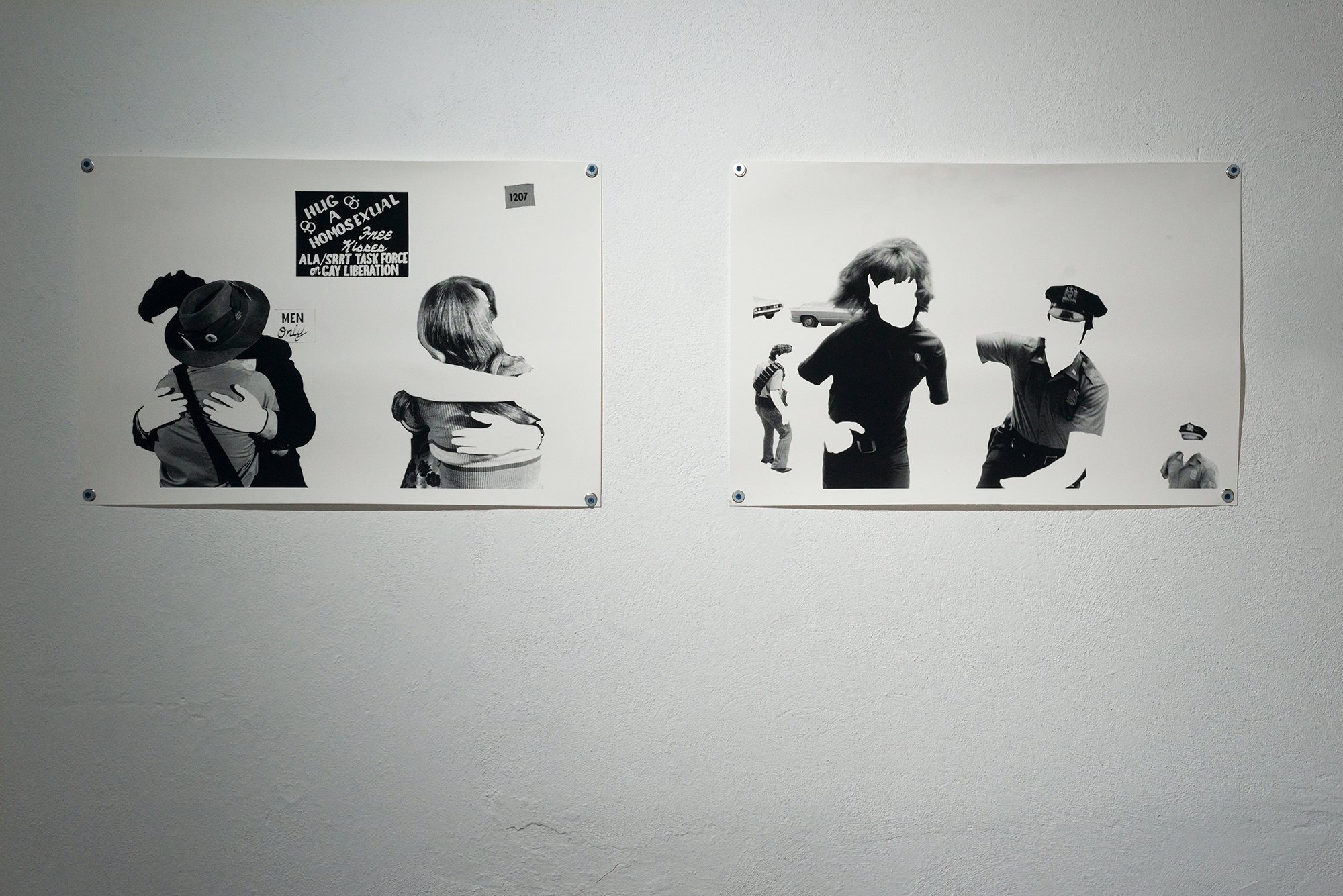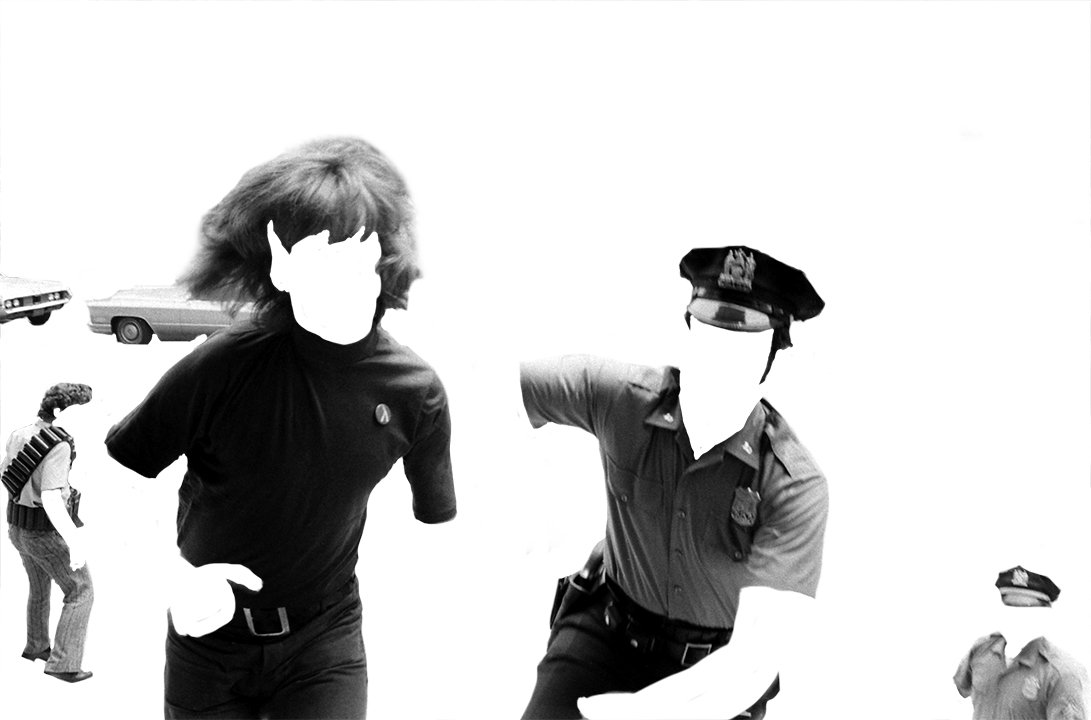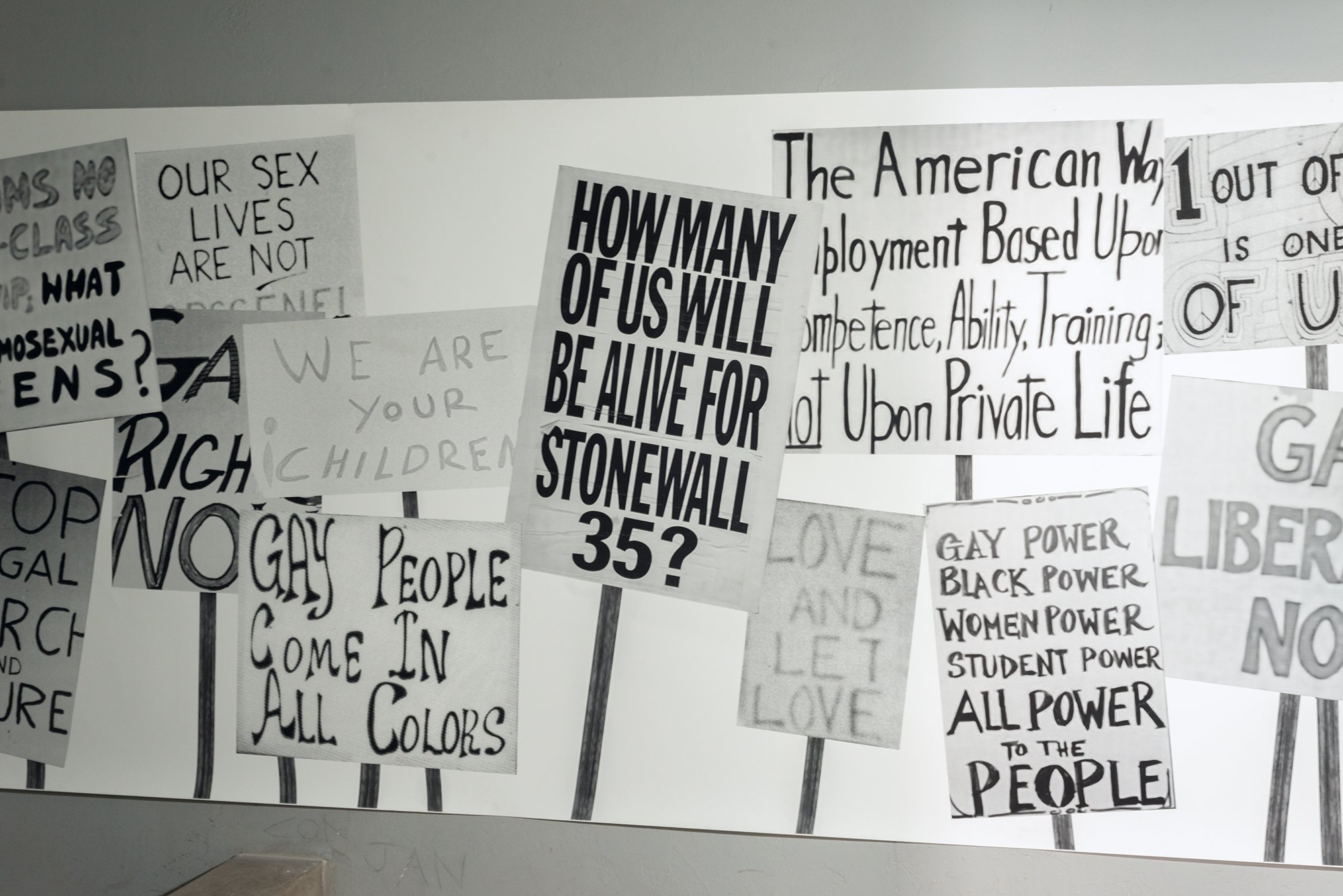Phantoms of History: Queer Erasure
Phantoms of History: Queer Erasure is a mixed-media installation addressing the distressing phenomenon of marginalized voices being stifled within queer communities. This endeavor was born out of a deep-seated concern for the stories that have been muted and the individuals whose narratives have been obscured throughout history. Through a deliberate act of enlarging photographs of queer activists and subsequently erasing their bodies and surroundings, I endeavored to spotlight the urgency of amplifying these silenced voices and reclaiming their rightful place within the annals of history.
Vistors entered a solitary confinement cell, with the disembodied voice of Queer rights activist Sylvia Rivera, “Y’all Better Quiet Down” speech from the 1973 Christopher Liberation Day Rally stands as an indelible moment in the history of LGBTQ+ activism. As a vocal transgender and queer rights pioneer, Rivera fearlessly took the stage to passionately address the crowd. In her speech, she implored the growing movement not to forget those who had been sidelined within the fight for equality—specifically, transgender and gender non-conforming individuals, as well as those of color. Through her unwavering determination and resilience, Sylvia Rivera's speech underscored the importance of intersectionality and the need to confront issues of racism, sexism, and discrimination within the movement itself. Her words remain a testament to the ongoing struggle for inclusivity, justice, and equality, inspiring future generations of activists to amplify the voices of those who have been silenced and to fight tirelessly for a world where all individuals can live with dignity and pride. In the confinement cell are prints of queer activist signs floating in a white void.
The act of erasure, both literal and metaphorical, represented the systematic suppression and omission of these individuals' contributions, experiences, and struggles. By visually confronting viewers with the void left behind by the erased figures, I aimed to evoke a sense of loss, thereby inviting contemplation on the consequences of omitting these narratives.
The nstallation sought to serve as a poignant reminder that history has often marginalized those who exist at the intersections of various identities. Through the juxtaposition of absence and presence, I aimed to provoke a critical examination of the implications of erasure, and the subsequent impact on the understanding of queer history and identity.






